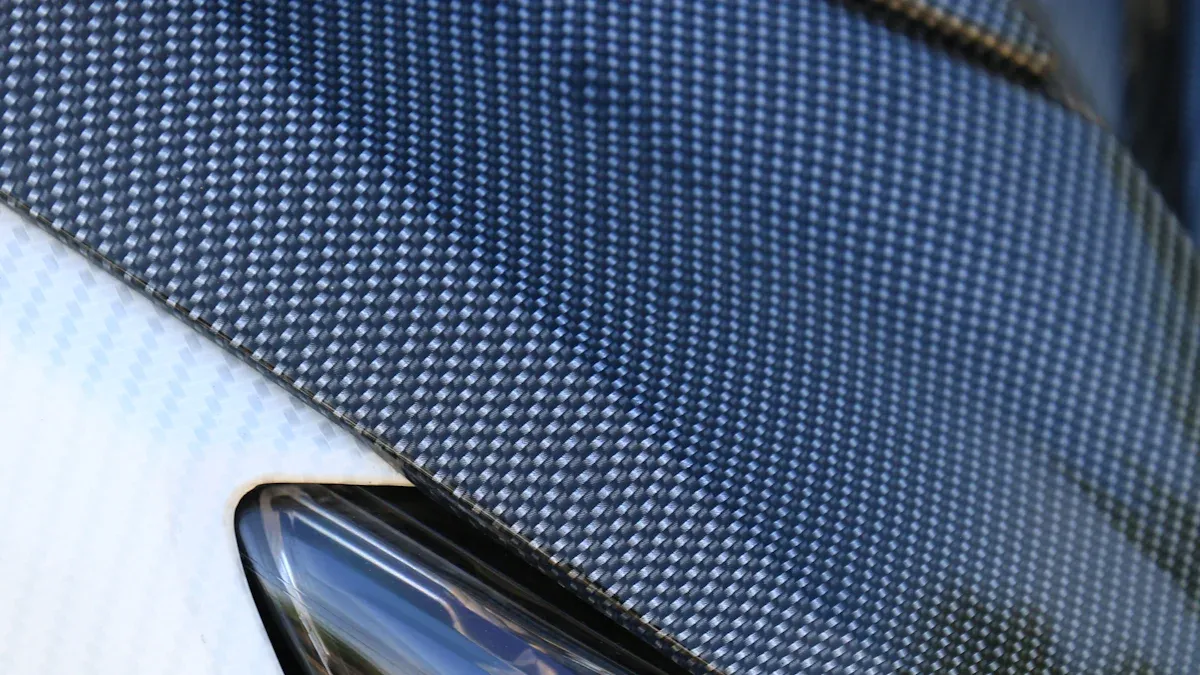
Carbon fiber-reinforced materials have transformed automotive manufacturing. These composites combine lightweight properties with exceptional strength, making vehicles more fuel-efficient and durable. To fully harness their potential, you need to optimize the injection molding process. This technique ensures precise shaping of carbon fiber parts, improving performance and reducing waste. When you master it, you open the door to faster production, cost savings, and innovative designs that meet modern automotive demands.
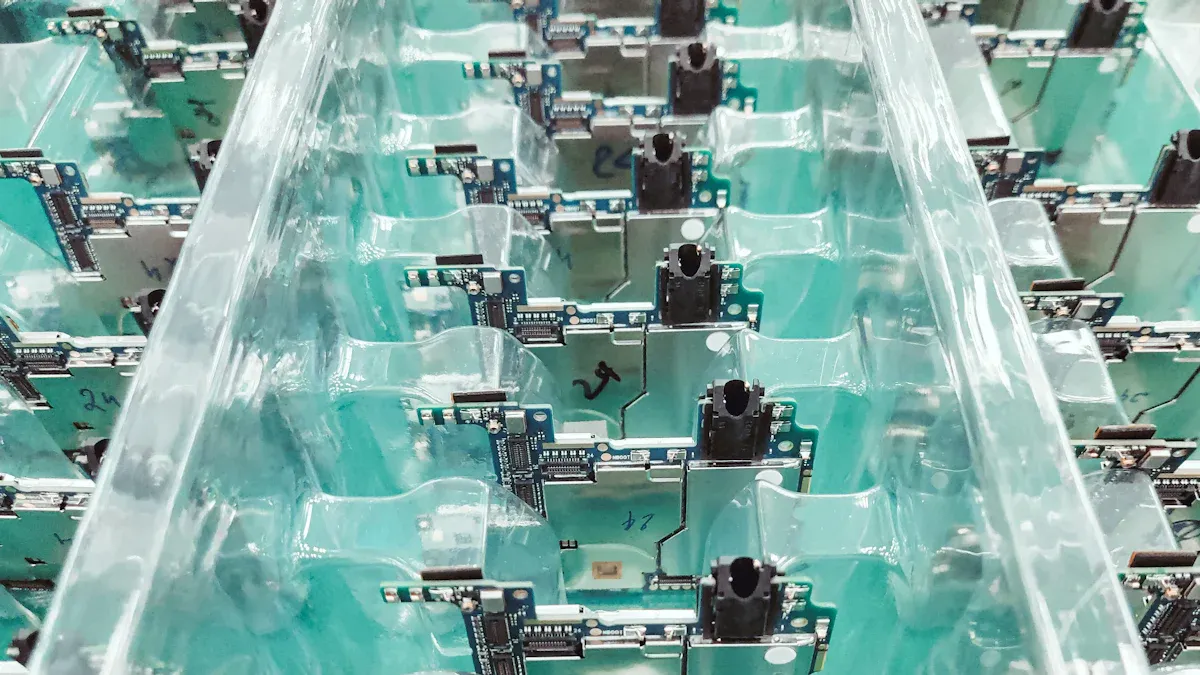
Carbon fiber stands out due to its exceptional mechanical and thermal properties. It offers high tensile strength, low weight, and excellent resistance to heat and corrosion. These characteristics make it ideal for demanding applications like automotive manufacturing. For instance, tensile strength values for non-irradiated carbon fiber composites reach 49.522, while irradiated ones achieve 17.547. Similarly, interlaminar shear strength is significantly higher in non-irradiated composites, reaching 117.96.
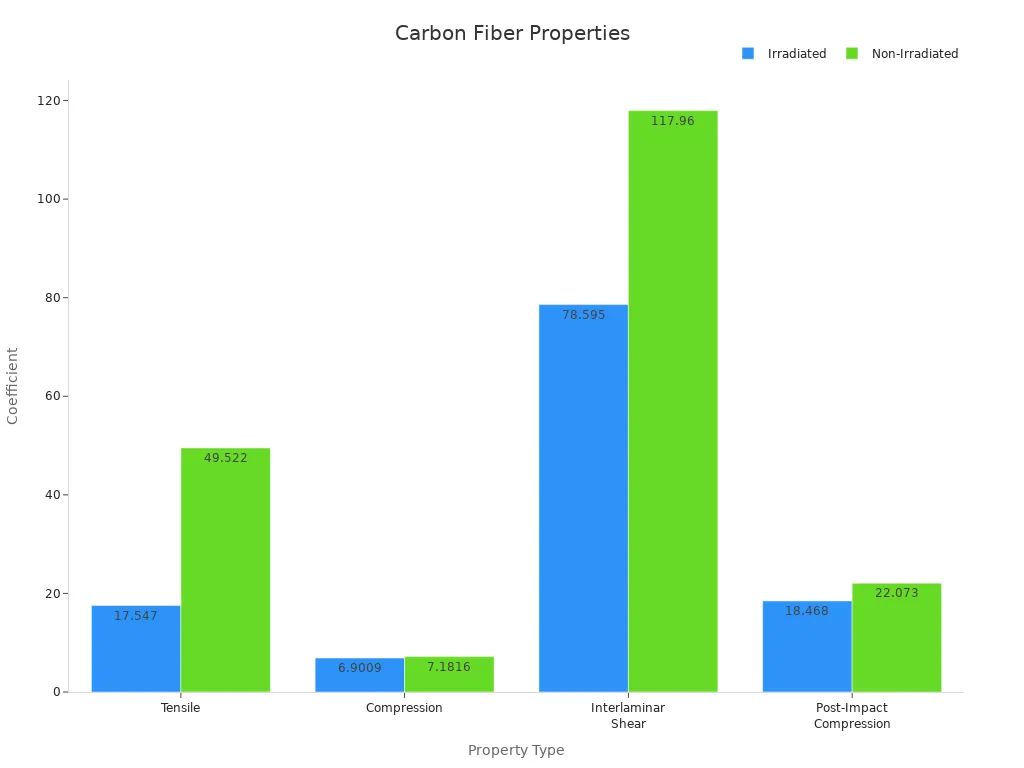
These properties ensure that carbon fiber composites can withstand extreme conditions while maintaining structural integrity. This combination of strength and durability is unmatched by traditional materials like steel or aluminum.
Using carbon fiber in vehicles offers numerous advantages. It significantly reduces the weight of components, leading to better fuel efficiency and lower emissions. For example, replacing steel parts with carbon fiber can achieve up to 50% weight savings. This reduction translates to a 6-8% improvement in fuel consumption for every 10% decrease in weight. Additionally, CO2 emissions drop by 1g/km for every 10kg saved.
| Benefit Type | Value |
|---|---|
| Weight Savings | 50% compared to steel parts |
| Fuel Consumption Reduction | 6-8% for every 10% weight reduction |
| CO2 Emissions Reduction | 1g/km for every 10kg weight savings |
Moreover, carbon fiber enables manufacturers to reduce the number of parts in a vehicle. For instance, a subframe made from carbon fiber can cut the number of parts by 87%, simplifying assembly and improving reliability. These benefits make carbon fiber a game-changer in automotive design and production.
The demand for automotive recycled carbon fiber is growing rapidly. Manufacturers are turning to recycled materials to lower costs and meet sustainability goals. Companies like BMW and Ford are already incorporating recycled carbon fiber into their vehicles. This approach not only reduces production expenses but also enhances the strength and performance of automotive composites.
Advancements in recycling technologies, such as Automated Fiber Placement (AFP) and Resin Transfer Molding (RTM), have made it easier to reclaim carbon fibers from end-of-life products. These innovations are driving down costs and making high-performance composites more accessible. Additionally, increased environmental awareness and circular economy practices are fueling the adoption of recycled carbon fiber. Companies like ELG Carbon Fiber and Carbicrete are leading the way by reprocessing carbon fibers to create sustainable automotive solutions.
Injection molding is a manufacturing process that shapes materials into precise forms by injecting molten material into a mold cavity. In automotive injection molding, thermoplastics or composites like carbon fiber are heated until they become pliable. The material is then injected into a mold under high pressure, cooled, and solidified into the desired shape.
The process involves several critical phases that ensure efficiency and quality:
These phases work together to enhance production quality and reduce waste, making injection molding a cornerstone of automotive parts production.
Automotive injection molding offers unmatched benefits for producing high-performance components. It supports rapid production, customization, and cost efficiency, which are essential in the automotive industry. For example:
Injection molding also facilitates the transition to electric vehicles (EVs), where lightweight and durable components are crucial. Its ability to produce intricate designs quickly and efficiently makes it indispensable for modern automotive manufacturing.
Injection molding enhances the use of carbon fiber composites in automotive parts production. It reduces material waste by 20–40%, lowers defect rates to less than 1%, and enables rapid production of over 1,200 small parts per hour. These metrics highlight its efficiency and scalability.
Compared to traditional methods, injection molding ensures consistent fiber alignment, which improves the strength and durability of carbon fiber components. It also supports energy-efficient machines, cutting energy costs by up to 50%. This combination of precision, speed, and cost savings makes injection molding ideal for thermoplastic injection molding applications in the automotive industry.
By leveraging this process, you can produce lightweight, high-performance parts that meet industry demands while minimizing environmental impact.
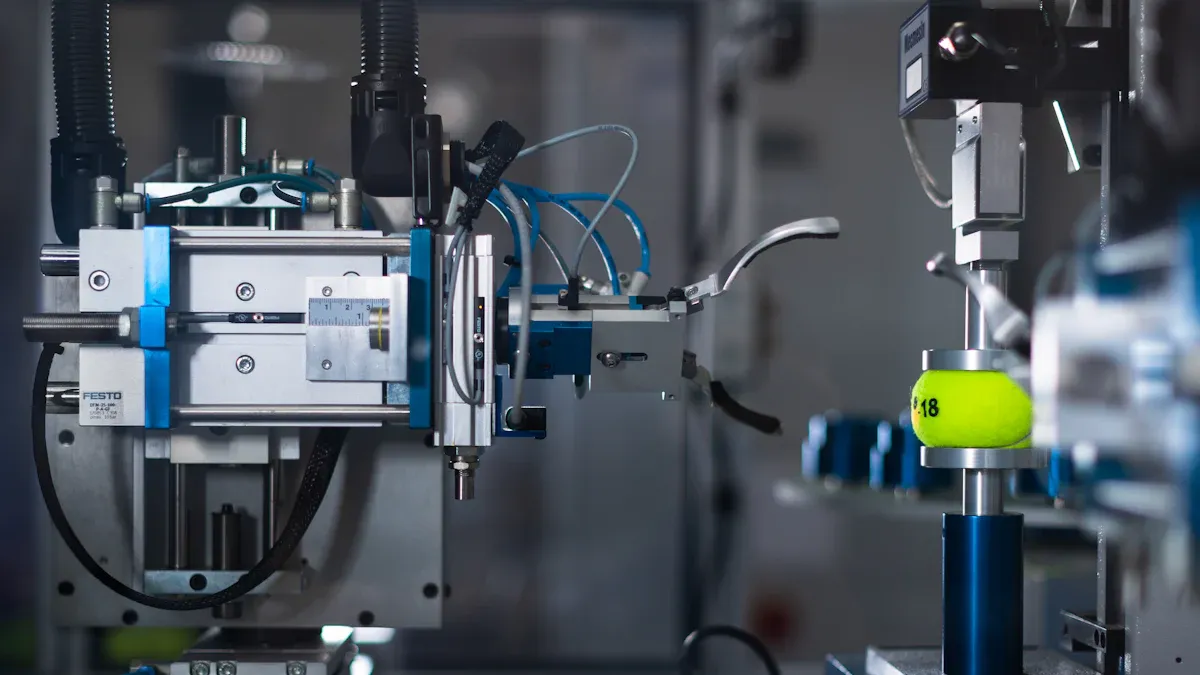
Fiber orientation plays a critical role in determining the mechanical properties of carbon fiber-reinforced parts. When fibers align correctly, they enhance the strength and durability of the final product. However, controlling this alignment during injection molding can be challenging. The flow of molten material inside the mold often causes fibers to orient randomly, which reduces the overall performance of the part.
Different fiber orientation types impact mechanical properties in unique ways:
| Fiber Orientation Type | Impact on Mechanical Properties |
|---|---|
| Unidirectional | Maximizes strength in one direction. |
| Random | Provides isotropic properties but less strength. |
| Bidirectional | Balances strength in two directions. |
| Multi-directional | Offers strength in multiple directions, enhancing overall performance. |
To achieve optimal fiber alignment, you must carefully control the injection speed, pressure, and mold design. Slower injection speeds can help reduce turbulence, allowing fibers to align more predictably. Additionally, using flow simulation software can help you predict and adjust fiber orientation during the design phase. This ensures that the final product meets durability and performance requirements.
The mold design significantly influences the quality of carbon fiber-reinforced parts. Poorly designed molds can lead to defects such as warping, uneven cooling, and weak spots. To address these issues, you need to focus on several key design principles:
| Insight | Description |
|---|---|
| Fiber Volume Fraction | Strongly influences the tensile modulus of injection-molded composites. |
| Fiber Length | Affects tensile strength; shorter fibers lead to reduced strength. |
| Fiber Dispersion | Poor dispersion correlates with decreased strength, as indicated by the DI. |
| Microstructural Inhomogeneity | Variability in mechanical properties arises from inhomogeneities in the microstructure. |
You should ensure that the mold has uniform wall thickness to prevent uneven cooling and warpage. Balanced cooling channels in the core and cavity design help maintain consistent temperatures, reducing the risk of defects. Draft angles also play a crucial role in facilitating the easy ejection of parts, which minimizes the chances of damage during production.
By addressing these considerations, you can improve the durability and quality of carbon fiber parts while maintaining efficiency in high volume production.
Defect prevention is essential for producing high-quality carbon fiber-reinforced parts. Common defects include voids, warping, and fiber misalignment, all of which compromise the durability of the final product. Process optimization can help you minimize these issues and achieve consistent results.
Key strategies for defect prevention include:
| Design Principle | Description | Benefits |
|---|---|---|
| Uniform Wall Thickness | Ensure consistent wall thickness to avoid uneven cooling and warpage. | Improved part quality and reduced cooling times contribute to better overall cycle efficiency. |
| Core and Cavity Design | Design cores and cavities with balanced cooling channels. | Ensures uniform temperature distribution, reducing cooling time and minimizing defects. |
| Draft Angles | Adequate draft angles facilitate easy ejection of parts. | Reduces cooling time required before ejection, enhancing efficiency. |
| Gate and Runner Design | Hot runners maintain melt temperature, reducing cycle time. | Improves part quality by eliminating cold runner waste. |
| Multi-Cavity Molds | Use multiple cavities to produce several parts in a single cycle. | Increases production efficiency and reduces overall cooling time per part. |
You can also use advanced monitoring systems to track temperature, pressure, and fiber alignment in real time. These systems allow you to make adjustments during the injection molding process, ensuring consistent quality. By implementing these optimization techniques, you can reduce defect rates and enhance the efficiency of high volume production.
Emerging technologies are revolutionizing how you can mold carbon fiber for automotive applications. These innovations focus on improving production speed, reducing waste, and enhancing the quality of components. For instance:
These advancements not only improve production processes but also make carbon fiber components more accessible for widespread use in vehicles.
The benefits of automated manufacturing over traditional methods further highlight these innovations:
| Metric | Automated Manufacturing | Traditional Manufacturing |
|---|---|---|
| Production Speed | 25% Faster | Slower |
| Consistency | 30% Better | Less Reliable |
| Waste Reduction | 15% Less Waste | More Waste |
| Cost per Unit | 20% Cheaper | More Expensive |
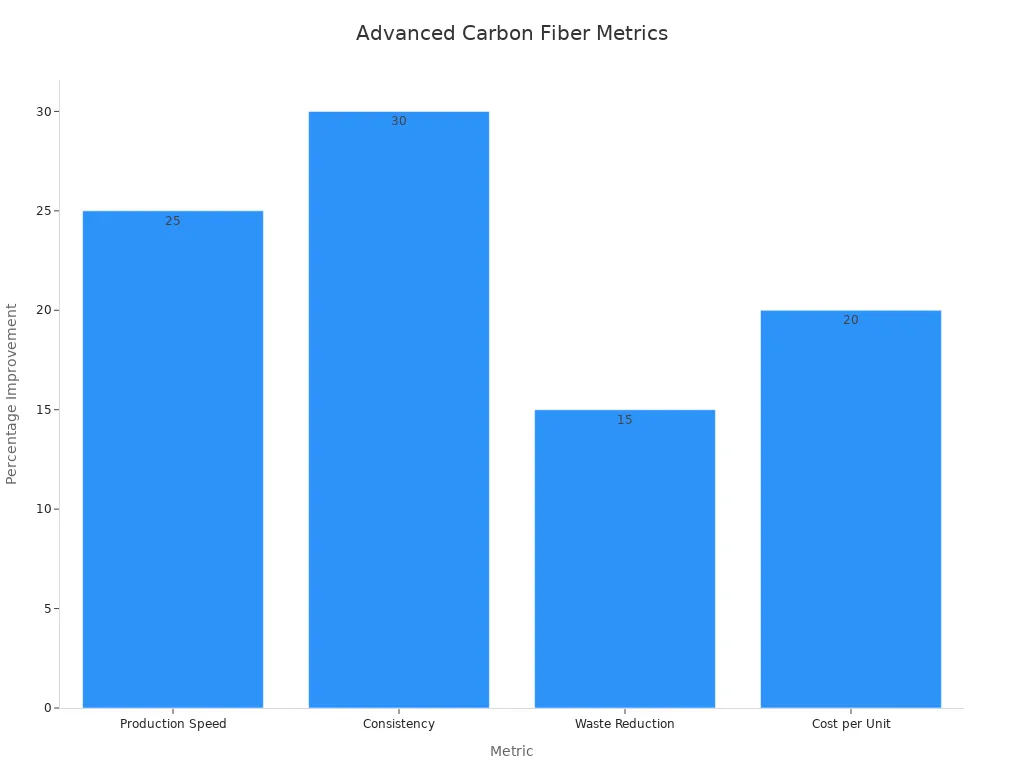
By adopting these technologies, you can achieve greater cost efficiency while maintaining high-quality standards.
Ensuring the quality of carbon fiber parts requires precise and reliable control measures. Advanced tools like the HandySCAN 3D scanner and FreeScan Trak Pro2 have set new benchmarks in quality assurance.
The HandySCAN 3D scanner allows you to check and document production phases efficiently. It ensures dimensional accuracy for both the products and the tools used in their manufacture. This reduces errors early in the process, saving time and resources.
The FreeScan Trak Pro2 takes quality control a step further. Its metrology-grade precision ensures strict adherence to tolerances. High-speed scanning capabilities expedite inspections, preventing production delays. Real-time data processing enables immediate identification and correction of deviations. This ensures that every component fits perfectly, enhancing overall reliability.
By integrating these technologies, you can maintain consistent quality while minimizing production errors.
Sustainability is becoming a cornerstone of automotive manufacturing. Recycled carbon fiber offers an eco-friendly solution that reduces waste and lowers the carbon footprint of production.
The market for recycled carbon fiber reached USD 164.9 million in 2022 and is expected to grow at a compound annual growth rate (CAGR) of 10.9% from 2023 to 2030. This growth reflects the increasing demand for sustainable materials in the automotive industry.
| Statistic | Value |
|---|---|
| Market Size (2022) | USD 164.9 million |
| Expected CAGR (2023-2030) | 10.9% |
| Environmental Benefit | Reduces waste and carbon footprint |
Recycling technologies like Automated Fiber Placement (AFP) and Resin Transfer Molding (RTM) make it easier to reclaim carbon fibers from end-of-life products. These methods not only lower production costs but also contribute to a circular economy. By incorporating recycled carbon fiber into your manufacturing processes, you can align with sustainability goals while maintaining high performance.
Carbon fiber-reinforced materials have revolutionized automotive manufacturing. Their high strength-to-weight ratio, heat resistance, and durability make them indispensable for creating efficient and long-lasting vehicles. You can optimize production by adopting advanced techniques like resin transfer molding and leveraging AI-driven tools. These strategies enhance efficiency while ensuring superior product quality.
Sustainability and innovation remain critical for the future of automotive manufacturing. By embracing recycled carbon fiber and cutting-edge technologies, you contribute to a greener industry while meeting performance demands. The path forward lies in combining precision, efficiency, and environmental responsibility.
Carbon fiber offers high strength, low weight, and heat resistance. These properties improve vehicle performance and fuel efficiency. Injection molding ensures precise shaping and consistent quality, making it perfect for producing lightweight, durable automotive parts.
Focus on uniform wall thickness, balanced cooling channels, and proper fiber alignment. Use real-time monitoring systems to track temperature and pressure. These measures reduce voids, warping, and misalignment, ensuring high-quality parts.
Recycled carbon fiber retains most of its strength and durability. Advanced recycling methods like Resin Transfer Molding reclaim fibers effectively. You can use recycled material to lower costs and meet sustainability goals without compromising performance.
Automated systems like Engel’s in-situ polymerization machines enhance production speed and consistency. Thermoplastic composite technology and organic hybrid composites reduce waste and costs. These innovations make molding faster and more reliable.
Yes, injection molding produces lightweight, durable components essential for EVs. It enables rapid production of intricate designs, reducing vehicle weight and improving battery efficiency. This process supports the transition to sustainable transportation.